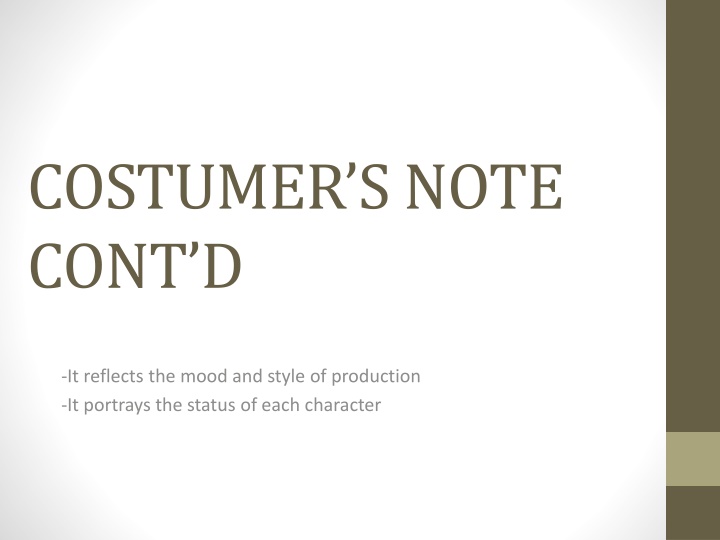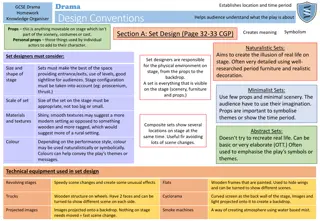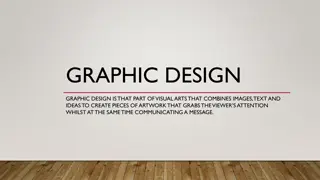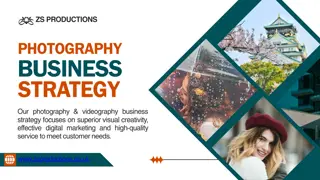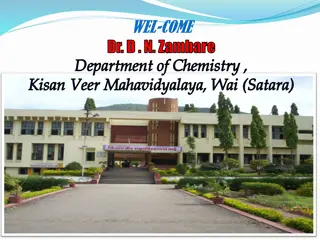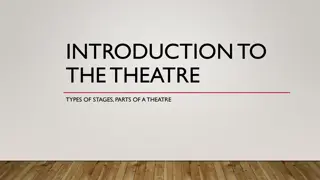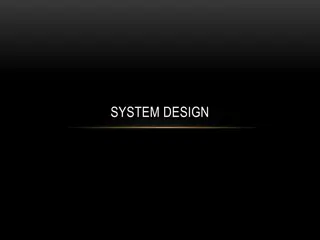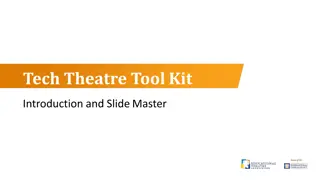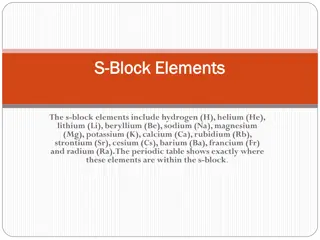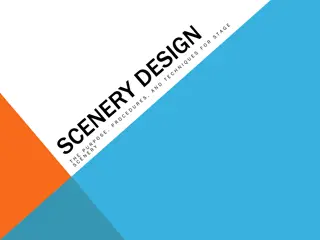Role of Design Elements in Stage Productions
The significance of design elements like costumes, lighting, scenic design, and props in stage productions. Explore how these elements contribute to setting the mood, portraying characters, establishing the period, and enhancing the overall aesthetic value of a play. Dive into the functions and responsibilities of costume designers, lighting designers, scenic designers, and props managers to bring a production to life.
Download Presentation

Please find below an Image/Link to download the presentation.
The content on the website is provided AS IS for your information and personal use only. It may not be sold, licensed, or shared on other websites without obtaining consent from the author.If you encounter any issues during the download, it is possible that the publisher has removed the file from their server.
You are allowed to download the files provided on this website for personal or commercial use, subject to the condition that they are used lawfully. All files are the property of their respective owners.
The content on the website is provided AS IS for your information and personal use only. It may not be sold, licensed, or shared on other websites without obtaining consent from the author.
E N D
Presentation Transcript
COSTUMERS NOTE CONT D -It reflects the mood and style of production -It portrays the status of each character
Costumers contd It reflects the period of a play It brings about the aesthetic values of a play Lighting Lighting is part of the visual aspect of stage production. The lighting man paints the stage with lights the way a painter his canvas. To properly light a show, a variety of lights is required. It is therefore the duty of the lighting designer to plot or design his lighting scheme, i.e how these lights will be utilized to great advantage in the production. He determines the quality, intensity, tone and dimension of light.
functions of Lighting For illumination; To delineate locale; To establish the mood of a play; To give emphasis; To reflect the time of the day; For special effects; To simulate life
Scenic Designer He is the artist in-charge of the scenery. He designs the set based on his interpretation of the play and director s concept. The set designer must agree with the director on the type, style, mood, spirit and goal of a play because the scenery must reflect all these. He also needs to agree with other designers on the overriding colour motif of a play. This is because the three visual elements-scenery, light and costume must harmonize in a production.
Props Manager He is in-charge of stage properties. He makes a comprehensive list of all the properties needed for a production. He also procures and keep those props before and during production n. Assisted by the stage hands, the props manager ensures the placement, arrangement and removal of props needed for a particular scene during performance. Properties are items other than scenery and costumes needed in a production. Such items include: furniture, decorations, walking stick, handkerchief, food, drinks etc Functions of Stage Props
Functions of Stage Props They help characterization Props enhance and make a play believable They are used for aesthetic purpose They portray the status of a character
